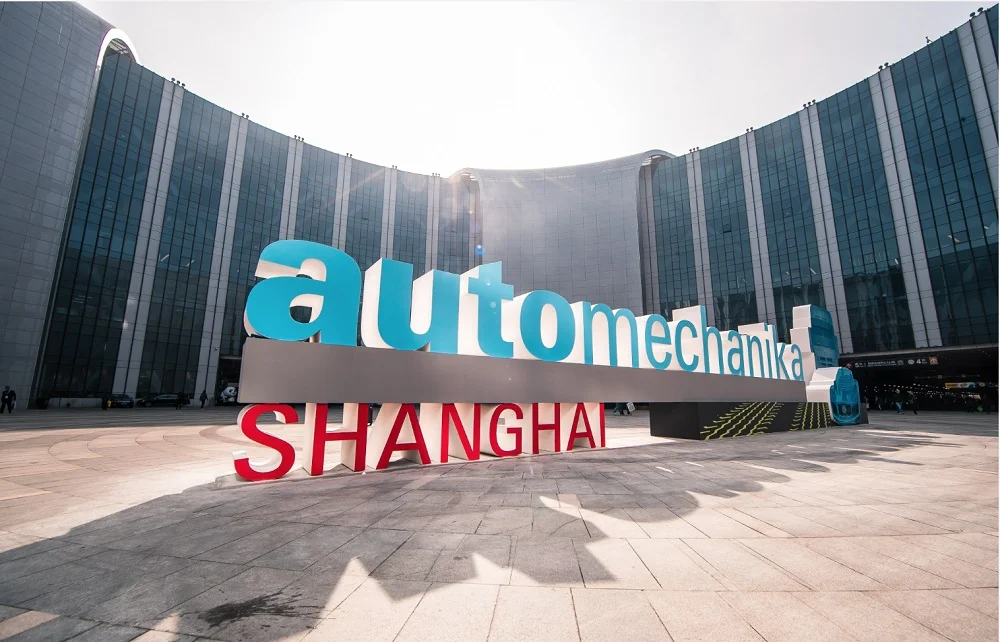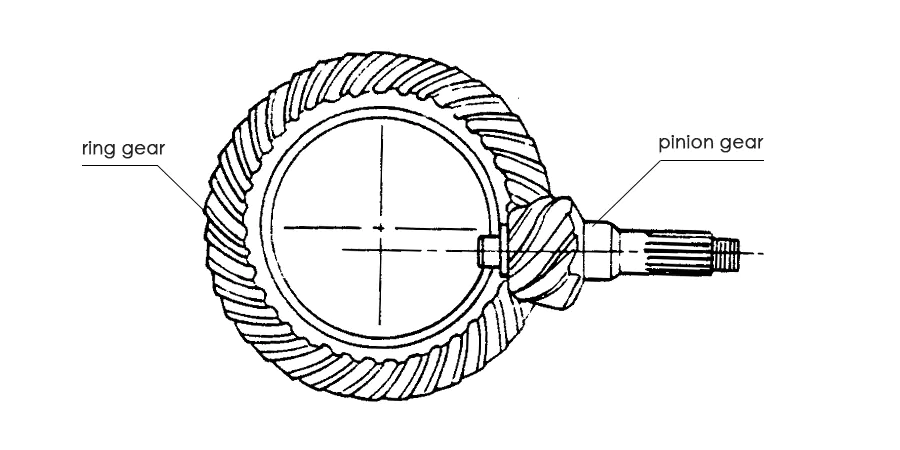Off-road vehicles demand a highly capable drivetrain to handle rough terrains, steep inclines, and unpredictable surfaces. Unlike standard road cars, which primarily operate on smooth and predictable pavement, off-road vehicles must navigate through mud, sand, rocks, and uneven trails. This requires a drivetrain that can efficiently distribute power while maintaining traction under extreme conditions.
One of the most critical components in this system is the pinion gear differential. This component plays a key role in transferring torque between the wheels, allowing them to rotate at different speeds when necessary while ensuring optimal power distribution. In off-road conditions, where maintaining traction is crucial, a well-designed pinion gear differential can mean the difference between moving forward or getting stuck.
In this article, we will explore how the pinion gear differential enhances off-road performance, its significance in different differential types, and why selecting the right setup is essential for tackling challenging terrain. Whether you are an off-road enthusiast looking to upgrade your vehicle or simply curious about how differentials work, this guide will provide valuable insights into this essential drivetrain component.

How a Pinion Gear Works in a Differential?
A pinion gear differential is a crucial component of a vehicle’s drivetrain, responsible for distributing torque between the wheels while allowing them to rotate at different speeds. This function is essential when turning, as the inner and outer wheels must travel different distances. Without a differential, both wheels would be forced to spin at the same speed, leading to excessive tire wear and reduced handling performance.
At the core of the differential, the pinion gear engages with the ring gear, transferring power from the driveshaft to the differential assembly. As the pinion gear rotates, it drives the ring gear, which then powers the axle shafts connected to the wheels. Additionally, within the differential housing, smaller side gears (or axle gears) work with the spider gears to balance torque distribution between the wheels. This intricate mechanism ensures that power is delivered efficiently while allowing necessary speed variations between the wheels.
In off-road conditions, a well-designed pinion gear differential plays a vital role in maintaining traction. Uneven terrains often cause one wheel to lose contact with the ground or experience less resistance than the other. When this happens, a standard open differential may send most of the power to the wheel with the least resistance, reducing overall traction. However, with advanced differential designs such as limited-slip differentials (LSDs) or locking differentials, the pinion gear helps direct power more effectively to the wheel with better grip, preventing loss of momentum and improving off-road performance.
By understanding how a pinion gear differential operates, off-road enthusiasts can make informed decisions about the best differential setup for their vehicles. Whether navigating rocky trails or muddy paths, selecting the right differential type can significantly impact performance, durability, and overall driving experience.
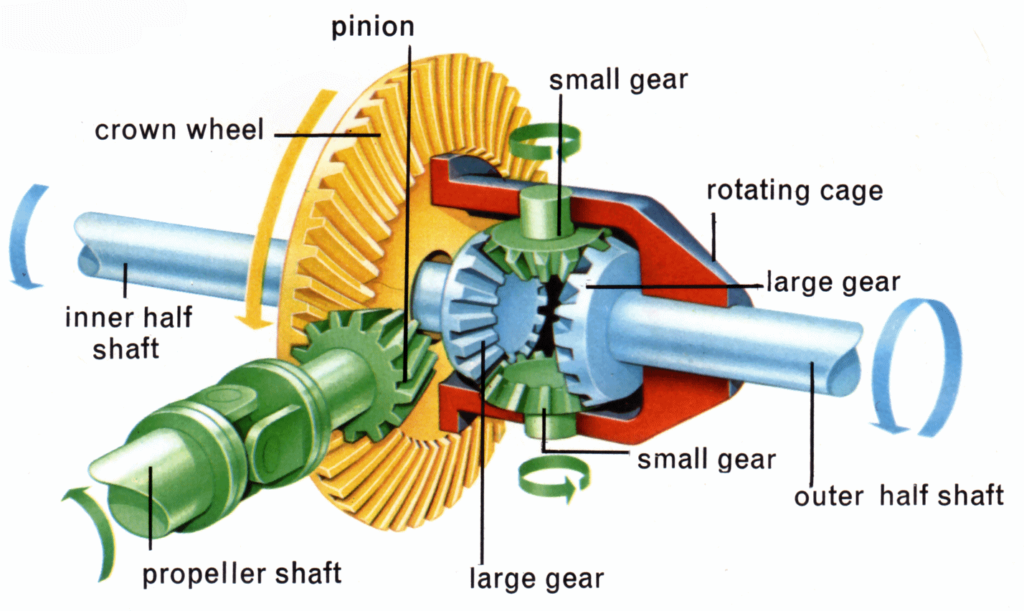
Why Pinion Gear Differentials Are Important for Off-Roading?
Off-road driving presents unique challenges that demand a robust and efficient drivetrain. Unlike smooth highways, off-road terrains such as mud, sand, and rocky trails require continuous power adjustments to maintain control and traction. This is where a pinion gear differential becomes essential, as it ensures optimal power distribution to the wheels, allowing the vehicle to adapt to ever-changing terrain conditions.
One of the biggest demands in off-roading is torque transfer. When navigating steep inclines or rough landscapes, a vehicle must deliver high torque to the wheels to keep moving forward. The pinion gear differential plays a crucial role in this process by transmitting power from the driveshaft to the axle shafts, ensuring the right amount of force reaches each wheel. However, extreme off-road conditions put significant strain on the pinion gear, making stronger materials, precise engineering, and proper lubrication critical for long-term durability.
Another key advantage of a pinion gear differential is its role in traction optimization. In loose or uneven terrain, such as deep mud or sand, one wheel may lose grip while the other maintains contact with the ground. A standard open differential might send most of the power to the slipping wheel, causing a loss of momentum. However, with advanced differential setups like limited-slip differentials (LSDs) or locking differentials, the pinion gear helps distribute power more effectively, sending more torque to the wheel with better traction. This significantly improves off-road capability by reducing wheel spin and maximizing forward motion.
Types of Differentials Used in Off-Road Vehicles
Choosing the right pinion gear differential is essential for optimizing off-road performance. Here are the most common types used in off-road vehicles:
1. Open Differential
An open differential allows the wheels to rotate at different speeds, making it ideal for on-road use. However, in off-road conditions, it can cause the vehicle to lose traction if one wheel slips, as it sends power to the wheel with less resistance.
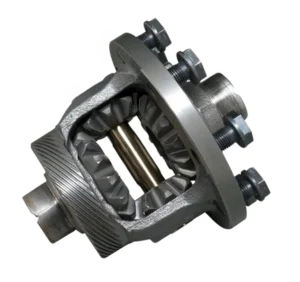
2. Limited-Slip Differential (LSD)
A limited-slip differential (LSD) improves traction by transferring more torque to the wheel with better grip. It’s effective for light to moderate off-roading, such as driving on dirt roads or mild trails.
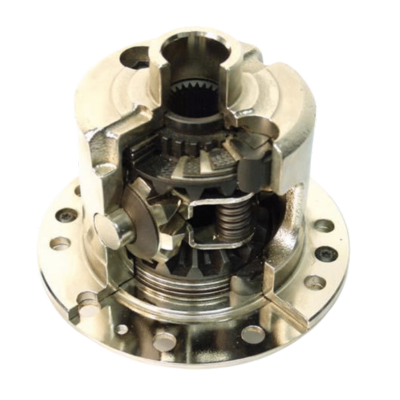
3. Locking Differential
A locking differential forces both wheels on an axle to rotate at the same speed, offering superior traction in extreme off-road conditions. This type is ideal for challenging terrains like mud or steep inclines.
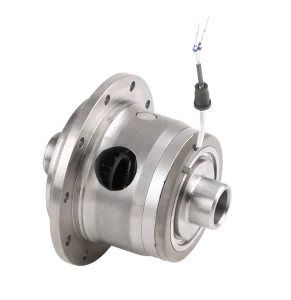
4. Torque-Vectoring Differential
A torque-vectoring differential uses electronic controls to distribute power between wheels for optimal traction and handling. Found in high-end off-road vehicles, it provides advanced performance for precise power management.
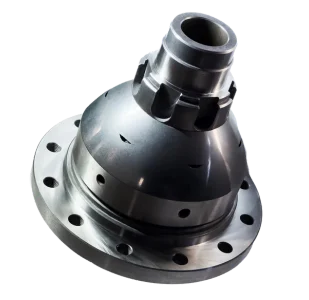
Each of these differentials offers unique advantages based on the terrain you plan to tackle and your off-road needs.
Common Issues and Maintenance of Pinion Gear Differentials
While pinion gear differentials are essential for off-road performance, they can face several issues over time, especially if not properly maintained. Here are some of the common problems and maintenance tips for keeping your differential in top shape:
Common Issues
- Noise (Whining or Humming)
A whining or humming sound coming from the differential often indicates improper gear mesh, worn bearings, or lack of lubrication. This is a common issue in pinion gear differentials that can worsen if ignored. - Overheating (Poor Lubrication)
A major cause of overheating in pinion gear differentials is inadequate lubrication. When the gears don’t have enough oil, friction increases, leading to higher temperatures. Overheating can cause long-term damage, such as worn-out bearings or melted seals. - Tooth Breakage or Wear (Heavy Load Usage)
Frequent off-road driving or carrying heavy loads can cause the pinion gears to wear down or break. This happens due to the high torque and pressure placed on the gears, especially during prolonged use.
Maintenance Tips
- Choose the Right Gear Oil and Change Regularly
To avoid many common issues, it’s important to choose the correct gear oil for your pinion gear differential. Regular oil changes help maintain proper lubrication, reducing friction and preventing overheating. - Regularly Inspect Gear Wear
Periodically checking the gears for wear and tear can help you catch any issues early. If the teeth of the gears are chipped or worn down, they may need to be replaced to prevent further damage. - Pay Attention to Unusual Noises and Vibration
Any unusual noise or vibration from the differential should be addressed immediately. These signs often indicate problems that need to be repaired to avoid more costly damage later.
Proper maintenance of your pinion gear differential ensures smoother operation, extended lifespan, and optimal performance during off-road adventures.
Conclusion
In conclusion, the pinion gear differential plays a crucial role in enhancing the performance of off-road vehicles. Its ability to distribute power efficiently across the wheels ensures better traction and control in challenging terrains. Whether you are navigating through mud, sand, or rocky paths, the right differential can make all the difference.
By maintaining your pinion gear differential properly and choosing the right type for your vehicle and driving conditions, you can significantly improve your off-road experience. Regular inspections, timely repairs, and the use of high-quality gear oil will keep your differential working efficiently for years to come.
If you’re looking for high-quality pinion gear differentials, XJX Gears is here to help. Our team of experts is ready to provide you with professional assistance, from one-piece purchases to optimized solutions that improve your off-road performance. Don’t hesitate to reach out to us for your off-road gear needs!

